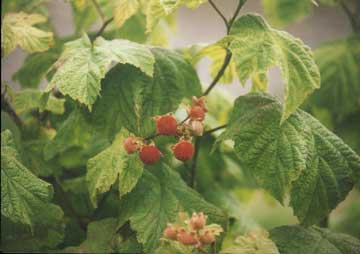
Standard English Name(s):
thimbleberry
Local English Name(s) (if different from above):
Scientific Name(s): Rubus parviflorus Nutt.
Upriver Halkomelem Name(s): t'qwum (fruit), t'qwumulhp (shrub)
Downriver Halkomelem Name(s): t'qwum (fruit), t'qwumulhp (shrub)
Island Halkomelem Name(s): t'uqwum (fruit)
Description, Habitat,
Ecology, & Distribution:
This is an erect shrub (to 3 m [ca.
10 ft] tall), with large, maple-leaf shaped leaves and white flowers.
The fruits are shallowly domed, raspberrylike, red and very sweet. Thimbleberry
occurs in open sites or open forest from low elevations in the north
and low to subalpine elevations in the south. It is found throughout
the coast.
Upriver Halkomelem Cultural
Role(s):
The tender young shoots were peeled
and eaten raw in the spring. The berries were eaten fresh in the summer.
The leaves were used to clean slime from fish when butchering.
Downriver Halkomelem Cultural Role(s):
The fruits and spouts were eaten.
Island Halkomelem Cultural Role(s):
Thimbleberries are not particularly juicy,
making them easy to preserve. They may be eaten fresh or preserved by
drying or canning, or made into jam.